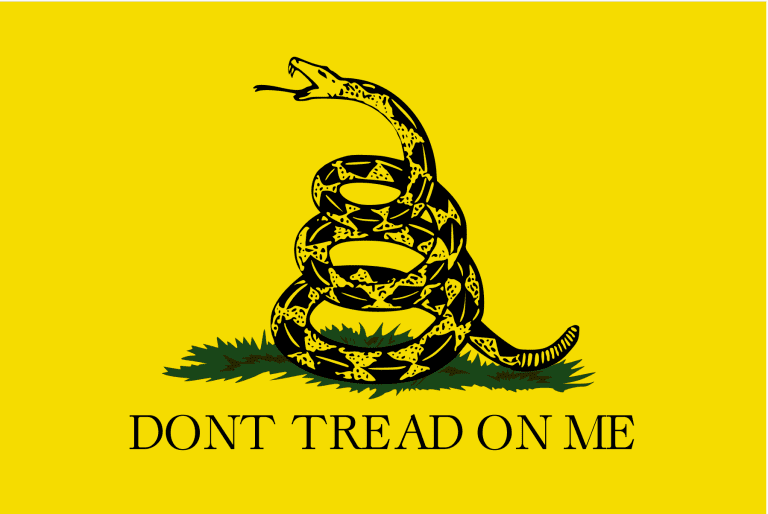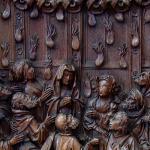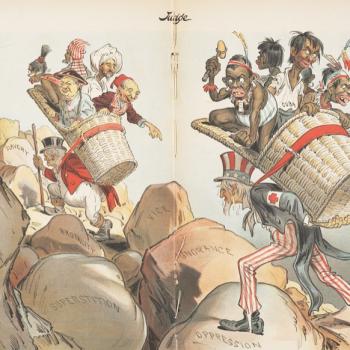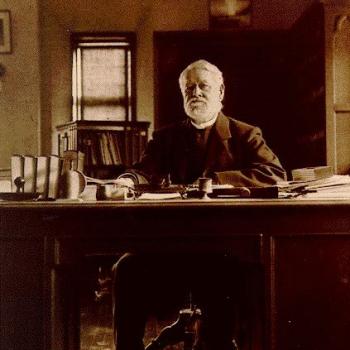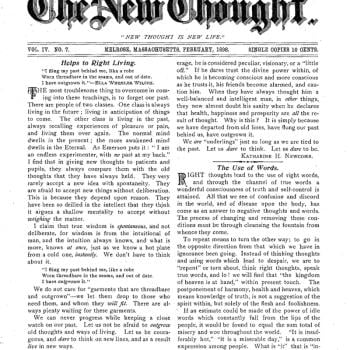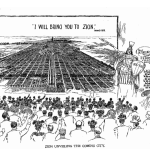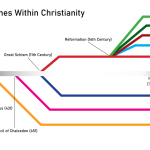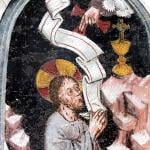Sometimes I post blogs because I have things to share, and on occasion, I am genuinely in search of information. Today, I am looking for advice on colonial and Revolutionary War era American history, and religion.
As I remarked recently, my current book project concerns Psalm 91, which has been phenomenally influential through Christian (and Jewish) history, and particularly in visual representations. The most powerful and enduring theme involves verse 13, which in the King James reads “Thou shalt tread upon the lion and adder: the young lion and the dragon shalt thou trample under feet.” This became a mainstay of Christian imperial and royal iconography through the Middle Ages and the Early Modern period, and that act of treading or trampling was something that kings properly did. Actually, that power properly belonged above all to Christ, but it was appropriated by the earthly rulers who were his delegated representatives. Whenever you see a reference to words from that text, commonly in the Latin, you know that this is what is being referred to. Such “trampling” imagery is amazingly ubiquitous in palaces and cathedrals, manuscripts and paintings.
In his influential translation, Martin Luther rendered the first verb as treten, which English translators borrowed as “tread.” In English, treading snakes and serpents pretty much always implied Psalm 91, and the royal or aristocratic mythology associated with it.
And that brings me to colonial America, where one of the most famous symbols of the Revolutionary era is the so called Gadsden Flag that first appears in 1775. As Ben Franklin wrote in that year, “I observed on one of the drums belonging to the marines now raising, there was painted a Rattle-Snake, with this modest motto under it, Don’t tread on me.” (The New Yorker published a useful summary of the flag’s origins and evolution). In our own time, you might have driven behind a car with this as a bumper sticker.
So here is my thought. Many Americans seeing that in 1775 would have realized how incredibly powerful and radical it was in inverting a clear millennium of Christian political theory, and actually taking the side of the underdog – um, I mean the undersnake. But that inversion only makes sense in the context of an explicit recollection of Psalm 91. It is a superb and concise piece of anti-monarchical propaganda.
American thinkers like Franklin had used the rattlesnake as a distinctively American symbol before the revolution, and it featured in the famous cartoons urging the colonies to “join or die.” (See Karen Severud Cook, “Benjamin Franklin And The Snake That Would Not Die,” The British Library Journal 22(1)(1996), 88-111). But the particular use of the “treading” vocabulary seems to me to be a clear and unmistakable reference to Psalm 91. Obviously not every sailor or marine who flew the flag was a learned Bible reader, but someone who first thought up the flag did fall into that category. Either that psalm link was intended, or it is a coincidence of mind-boggling proportions.
That would make terrific sense when we look at the other Biblical and religious vocabulary and imagery that the American revolutionaries deployed, which certainly included apocalyptic themes. I have looked at James P. Byrd’s excellent book, Sacred Scripture, Sacred War: The Bible and the American Revolution (Oxford University Press, 2013). This has a lot to say about dragon imagery, mainly in the context of Revelation and the apocalypse (pages 143-54) but I am not seeing anything about the humble rattlesnake, or about Psalm 91. The oddity in this flag, as I have noted, is that the serpent is actually the good guy.
I would dearly love to find some contemporary source to support my claim about the Gadsden Flag and 91, for instance from someone seeing the flag at the time and realizing the full connotations. I have been digging and Googling as best I can, but I cannot turn up anything to support the idea. Maybe I am looking in the wrong places. Or else it was too obvious to be worth remarking on. Or, perish the thought, maybe I am just wrong (“Anguished cries of No!, No! from the assembled congregation.”)
So does anyone know of any references that support the connection between the flag and the psalm? Can anyone help me?
On a related theme, I have not yet read James P. Byrd’s newest book, A Holy Baptism of Fire and Blood: The Bible and the American Civil War (Oxford University Press, 2021), but it looks very promising.


